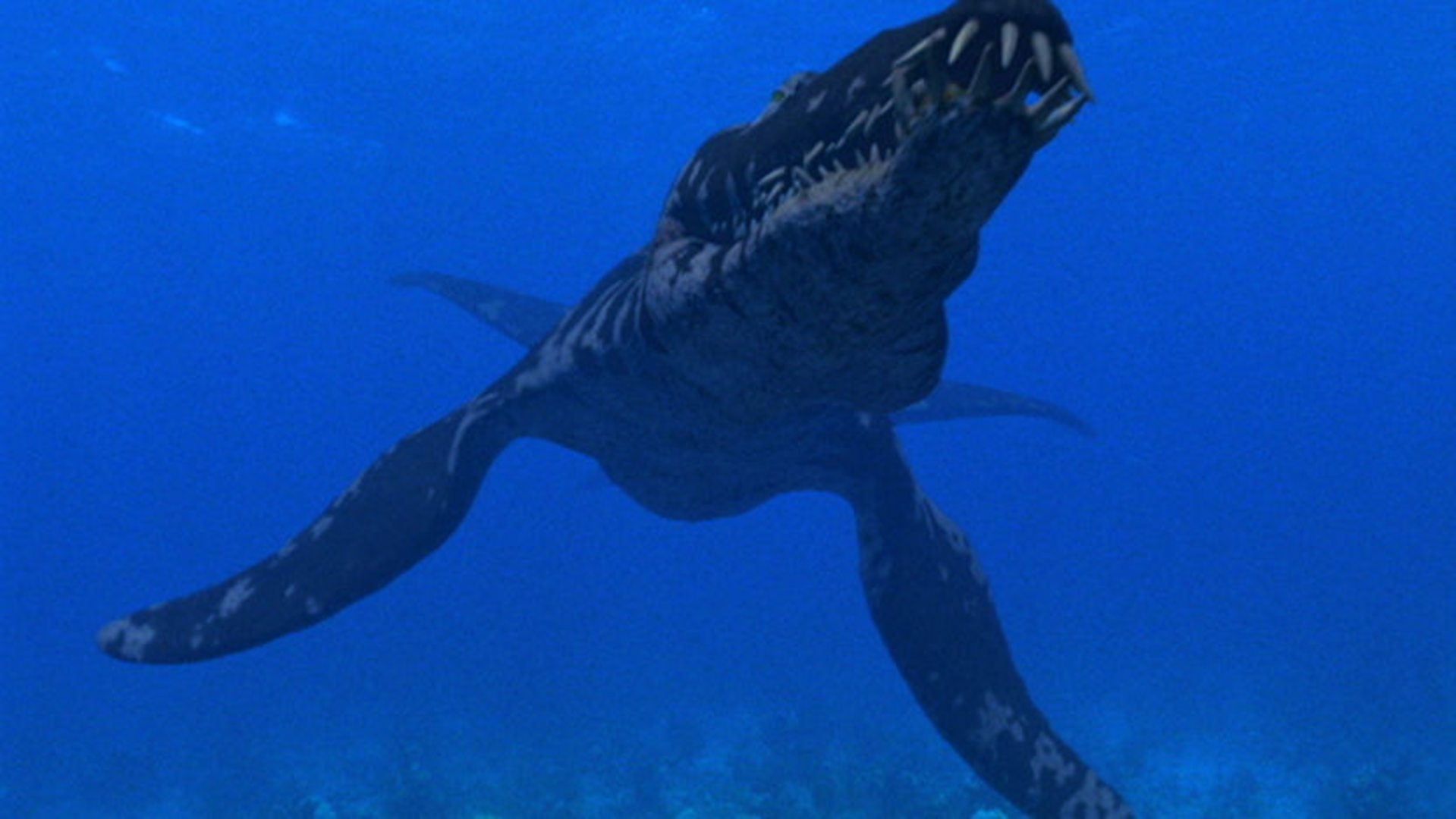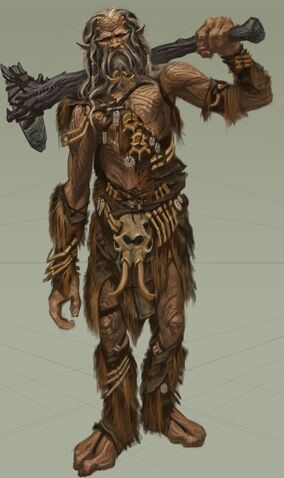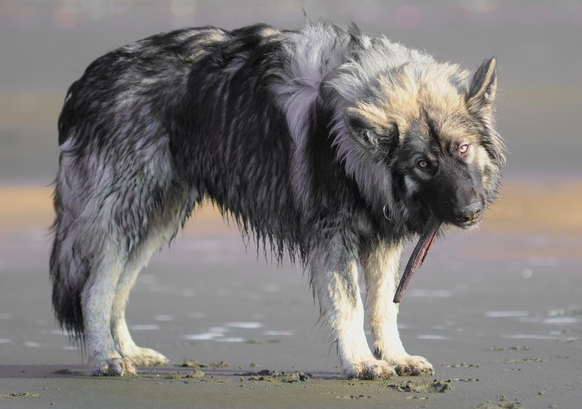Homo altus was not alone among Altania's native population, nor even its humanoids. By the twist of fate that planted several large deposits of [magic mineral] in their vicinity hundreds of thousands of years ago, some of which leaked into the rivers from which their ancestors drank or blown into the soil from which their food grew by the winds after volcanic eruptions, several populations of dire-wolves, Megaloceros, short-faced bears and cave lions in the Northwestern Altanic Plain, the western edges of the northeastern Altanic forest and the central Altanian mountains rapidly mutated into monstrous, bipedal, sapient and in some ways, inherently magical Therians between 120,000 and 100,000 years before the modern day. They outlasted their un-evolved, mundane predecessor species and quickly came to occupy the top of the food chain in their homelands, threatened only by each other and the Altanians.
While all races of northern Altanic Beastmen have opposable thumbs, brains comparable to a Neanderthal's in size and demonstrate human-like higher intelligence well beyond that of regular animals, including the ability to set fires and develop & wield tools, none appear to have advanced beyond the Copper Age technologically and the tribal level in terms of social organization at best. Arguably though, they didn't have to; they never moved past the simple lives of hunter-gatherers, and considering their incredible brute strength and animalistic instincts all three were quite capable of dealing with individual or small groups of Altanians (and later, Venskár humans) in a physical confrontation. Only should an army of hominids come rolling into their territory would they be at a serious disadvantage, and even then, without gunpowder weapons they'd still always have a chance at engaging and tearing apart the hominids with their physical strength as they are wont to do.
| Lycans | | A pair of Lycans on the hunt |  |
"Strong as  , that's for sure, you can tell just by looking at it. What you can't tell at first glance is that they're gods-damn fast, too. If you see one, you might as well try fighting, since it'll outrun you. Unless you happen to be an unarmed woman or child, these things have a strange sense of honor in their monstrous skulls and will let you go as long as you don't try sucker-punching them." , that's for sure, you can tell just by looking at it. What you can't tell at first glance is that they're gods-damn fast, too. If you see one, you might as well try fighting, since it'll outrun you. Unless you happen to be an unarmed woman or child, these things have a strange sense of honor in their monstrous skulls and will let you go as long as you don't try sucker-punching them."
-Amaric son of Bulf, Venskár hunter
Evolving from dire wolves that drank from (magic mineral)-tainted rivers and/or consumed prey that in turn had inhaled significant traces of [magic mineral], 'Lycans' are canids that have grown larger than the average human, exclusively walk upright on their hind legs, and possess incredible natural healing ability - broken limbs or ribs won't hinder them for more than two days, and they can recover from normally lethal injuries like a punctured lung if given a few hours to a few days. The average adult male specimen stands at 8'1" and weighs as much as a black bear; average females tend to remain in the 7-foot range. Like all other therians, they are nomadic hunter-gatherers (well, really, just hunters based on their hypercarnivorous diet) and typically sate their hunger on medium to large animals such as deer, moose and wolves (despite being descendants of the dire wolf, Lycans do not appear to feel any special affinity for their lupine cousins), though they will on occasion make war upon their therian neighbors the elk-fiends and the werebears; in such contests, their raw strength - a Lycan is able to knock off a man's head with a single blow of their paw - coupled with their remarkable, almost cougar-like agility makes them a fearsome opponent, and the fact that they never fight equals outside of a pack if they can help it only further compounds this.
The highest level of organization in Lycan society is a simple pack. Numbering between seven and fifteen Lycans (but only one to three females), each pack is simultaneously a cooperative and competitive collective: it's true that every packmate helps raise the younglings and shares any prey they catch with each other, but Lycans also have a hierarchy of dominance not all that different from regular wolves, and it is a hierarchy that is enforced most rigidly. At the pinnacle of the pack is the alpha, invariably the biggest, toughest and smartest of the Lycans, who clawed his way up to that position by battering the rest of the pack's males into submission; his second-in-command is called the beta, who was the last of his fellow males to be brought to heel; and the rest of the males are mere omegas, subordinate lackeys who must do as the alpha or beta command or else risk a mauling, exile from the pack, or death. The alpha determines what the pack hunts, where it goes, and who can or can't breed with the females, but his position is precarious - the beta, and even any omega, could challenge him for dominance at the drop of a hat. In turn, they have been reported to maintain discipline by beating and mauling insubordinate packmates, withholding food, or even plainly raping the disobedient to reassert their dominance. Females are regarded as home- and babymakers, and typically left behind to guard the young when the males are off hunting; single females that have grown too old to stick with their birth pack are hunted by males of other packs, and will 'belong' to the pack of the first male to catch and impregnate her.
Humans who have encountered Lycans, assuming they aren't killed, sometimes describe this particular breed of beastman as having an odd set of principles, not dissimilar from feathered dragons. Lycans try not to hunt prey they deem 'unworthy' but which any regular predator would prioritize, such as the very young or old and the sickly, and though their appearance is quite frightening, they rarely attack unarmed humans who have trespassed onto their territory without first issuing a warning (as Lycans cannot speak human languages naturally, this usually just consists of them pointing the wanderer in another direction). Unless they are fighting rival therians or an animal bigger than they are, such as a boreal mammoth or feathered drake, they also typically hunt alone. Unlike the case with feathered dragons, who are really just motivated to pick the targets that they do by bloodlust, Lycans have Neanderthal-sized brains and presumably do what they do out of an actual sense of honor. Silver, however, is a natural weakness of the Lycan - it won't kill them instantly, but it does hinder their regenerative factor to the point where it takes them as long as it would a human to recover from injuries like a broken bone - and the sight of it will drive Lycans into a fearful rage, instantly activating their fight-or-flight response which (unluckily for the human) falls on the 'fight' side more often than not.
Contrary to popular belief, Lycans cannot turn people into more Lycans with their bite; new Lycans must be born into this world. If you get bitten by one, the bite will just become infected and kill you over time like any other animal bite, not turn you into a werewolf. Lycans also cannot successfully breed with humans, as despite the Lycan's human-like intelligence and bipedal gait, both are entirely different species with entirely different origins and a far bigger genetic gulf between them than regular humans and Altanians; where relations between the latter are somewhat akin to a lion and a tiger, the former would be like trying to mate a salamander and an owl. Old Venskár tales of Lycans kidnapping foolhardy maidens who stray too deep into the woods to turn them into breeding stock (almost certainly inspired by the fact that Lycan males do actually rape lesser males in their pack to assert dominance and single females to forcibly induct them into their pack's ranks) have long been dismissed as scientifically impossible, truly nothing more than cautionary fables told to warn brash teenagers of the danger of blindly wandering into the forests of northern Altania. |
| Elk-fiends | | A trio of elk-fiends in 'war-form' emerging from the trees |  |
"Heim took one step towards that fawn before Mother and Father crashed out of the trees, looking like no deer we ever saw, and ripped him in half. We lost half a dozen more men to the bastards before we brought 'em down: Aldwald broke the mother's legs with his hammer and Arngrimr put a spear through her throat ten or so times while she was down, while I led the father off a cliff and shot erry arrow I still had into him as he twitched on a spiky rock. Their fawn got away though, which I'm guessing is what they wanted all along."
-Amaric son of Bulf, Venskár hunter
The 'elk-fiends' are unique among therians in that they normally retain the shape of their ancestors: Megaloceros, the giant elk, from which it evolved after consuming grass and water tainted by [magic mineral] over a hundred thousand years ago. Under most circumstances, every elk-fiend looks, eats and acts like an ordinary Megaloceros in every way; it's quadrupedal, strictly herbivorous, and quite peaceful outside of mating season, when males will headbutt one another with their massive antlers to woo their female audience. They're even still every bit as vulnerable to human weapons as an actual deer in this state - an arrow to the head will still instantly fell an elk-fiend.
It's what happens if one's attack doesn't instantly kill the elk-fiend, or if one makes the suicidally foolish decision to threaten its young, that one will learn exactly why it carries the name it's been given.
For it is then that the elk-fiend takes on the shape that it's most infamous for: what appeared to have been an ordinary Megaloceros will suddenly fall deathly silent, rear up on its hind legs, and spit its old vegetation-chewing teeth to the side in a torrent of blood and spit, their place having been taken by proper fangs and wolf-like sharp teeth, while its muscles swell, its forelimbs stretch and its hooves crack to make way for thick bear-like claws. What was once a docile herbivore will have become an 8-9 ft tall humanoid abomination, still as quick as a deer but now capable of punching a hole through a sheet of steel with its claws and biting a man in half with its unnaturally flexible, fang-lined jaws, and further equipped with a regenerative ability surpassing even that of a Lycan - elk-fiends can actually reattach severed limbs in this form, as long as said limb is still around of course. In this 'war form', the elk-fiend's gait resembles that of a gorilla rather than a human on account of its extremely long arms, but make no mistake - as said earlier, it is still able to move with all the speed and agility of a deer, and is now also a natural climber and omnivore, perfectly capable of sustaining itself on berries as well as meat as it pursues its quarry. The only way it can revert into its original state is by receiving a kiss from one of its children, who do not appear to fear their suddenly-monstrous parent. Bucks and fawns who have no children are unable to enter the war-form, and so are much more vulnerable to predators than fully grown elk-fiends with families.
Elk-fiends congregate into herds of up to twenty individuals, and to anger an entire herd is to practically guarantee oneself a gruesome death. These herds are invariably led by an alpha male who has overpowered every other male challenger within its herd, much like the alpha Lycans, but the herd itself can be further broken up into its constituent nuclear families. Male and female elk-fiends enter monogamous, lifelong relationships with one another in early adulthood, and jointly raise their children with occasional assistance from the rest of the herd (for example, by pooling gathered food - herbs, berries, even lichens - during lean winters, and letting the young eat first) until said children have entered adolescence. Between the ages of three-and-a-half and four, bucks will leave their parents to form their own herd or join another, while fawns wander alone into the world until they have chosen a mate, at which point they'll join said mate's herd. When faced with extreme danger, such as having to face off with an entire pack of Lycans, multiple elk-fiend herds will gather into an appropriately-named 'warherd', led by the biggest and most formidable 'alpha of alphas' from its constituent herds, to counter the threat with extreme prejudice. |
| Bereskarn | | A livid bereskarn destroys a small human or Altanic encampment |  |
"Let me tell you how to hunt iron bears: just don't. Not if you value your life. If you have to outrun one, try to get it to chase you into Lycan or elk-fiend territory, and hope the monsters are too busy ripping each other to pieces instead of you."
-Amaric son of Bulf, Venskár hunter
Bereskarns are extremely large and deadly ursine therians descended from short-faced bears that most likely drank too much [magic mineral]-tainted water. The average specimen stands at over 5 m tall, more than a meter taller than the largest of their non-sapient ancestors, and weighs almost as much as an elephant, making it the largest of all therians. Worse yet, their hide is extremely tough, being similar in strength and thickness to well-made leather (hence their name), and is further compounded by their Lycan-level regenerative ability - any hunter who has made the mistake of engaging the therian in close combat rather than simply trying to shoot it down from a safe distance will more than likely find their head forcibly separated from the rest of their body while trying to figure out where to stab the bear. A beastman this big has to eat constantly, and so iron bears will (in addition to usual prey animals, such as the common deer) target prey too big for even Lycans to hunt outside of a group, chiefly boreal mammoths; when sufficiently desperate, they'll also even take on elk-fiends, and in a one-on-one or even two-on-one match the bear will more often than not prevail over war-form elk-fiends, albeit not without a great struggle. Just about the only things bereskarns won't hunt are the local dinosaurians, for feathered drakes and dragons are still too formidable for the ursine therian to bring down, and even then they've been known to escape fights with feathered drakes by breaking the latter's shoulders with their massive jaws.
Despite their great bulk, the bereskarn does have one factor holding it back, compared to other therians: it does not live in packs or herds, but rather pursues a relatively solitary existence, living in nuclear families. Iron bears, much like elk-fiends, mate for life, and there are plenty of sightings of & stories about a surviving iron bear mourning its deceased mate. Like ravens, they will never mate again after their original mate has perished. While they still live, parent bears will take care of their young (typically 1-3 per family) to the best of their ability, with one half of the parent couple always sticking around the den to protect the children while its husband/wife hunts, and they are just as dangerous to outsiders who menace their children as ordinary bears are.
Hominid trespassers do have one saving grace when dealing with bereskarn: this therian is kind enough to warn them when they've transgressed onto its territory or run into it while it was hunting. The bear will first roar once to try and scare the human or Altanian away, then a second time while also beating its paws against the ground if that fails; only then will it assume its fighting stance, rearing up onto its hind legs and forming a crude fist with one paw, with which it will punch its other paw - a very human gesture indicating that it is about to unleash a brutal beatdown on the man or woman so witless as to ignore its prior warnings. The only exception is if the trespasser threatens, or appears to threaten, the iron bear's children; in that case, it will give no warning before attacking. |
| Werecats | | A werecat in simple armor |  |
"Lions that can walk like men and even know how to make weapons and armor? You must've become delusional from the desert heat. They don't exist."
-Hálof son of Hálof, Venskár adventurer who was eventually killed by werecats
The 'werecats', as these mutant descendants of the ancient Altanic cave lion are called, are the only known therian to no longer reside in its ancestor's homeland, having migrated en masse from the central Altanic mountains into the great desert below it towards the end of the last Ice Age. Though it can't recover from wounds as quickly as the other therians and is equal in size & strength to a Lycan, and certainly less physically imposing than an elk-fiend or bereskarn, the werecat has two major advantages over every other breed of therian: it is socially and technologically more advanced than they are. By 10,000 AA werecats had advanced to an equivalent to the human Copper Age, fashioning simple weapons and ornaments from copper, and had organized themselves up to a tribal level. While the basic social unit of the werecat remained the pride, comprised of ten to as many as thirty werecats led by an especially large and ferocious alpha male, prides can and have also congregated further into tribes of as many as four prides, in turn led by an 'alpha of alphas' who has bested all of the other prides' alphas to become the supreme leader for life (or at least, as long as he can defend his position from challengers). Non-pregnant females hunt and fight alongside their men, though they do not share leadership positions, exactly like ordinary lionesses.
Within each tribe, and even each pride, the supreme alpha appears to be the local lazy bum - thanks to his status, he can afford to sit tight while his lackeys hunt for food and bring it back to him, at which point he'll inevitably hog most of their kill for himself and strike anyone who objects across the face with his paw - but in actuality, he must constantly remain on guard against attempts to usurp his position by the subordinate males, who all have the right to challenge him for the top spot by duel. Inter-tribal challenges for the spot of 'alpha of alphas' tend to quickly deteriorate from duels into full-blown wars between the constituent prides, and tribes have also warred with each other for control over oases in their desert homeland or hunting rights to especially large herds of decently sized (and filling) herbivores such as mule deer. This, above all, is probably the main factor in holding back their societal advancement beyond the tribal level.
A tribe of up to or even slightly over a hundred werecats hunting is dangerous enough, but even worse is the fact that they fight armed & armored to further compensate for their lack of an incredible healing factor. Copper axes, swords & spears and leather armor of werecat make have been found and, while substantially weaker and cruder than contemporary bronze and iron human/Altanian weapons, still represent a major leap in this race of therians' mental faculties and fighting ability. Their military tactics, too, have advanced beyond what any of the other therians have shown: both Lycans and elk-fiends seem only capable of either a) bullrushing the opponent as either individuals or in packs/herds and b) simple ambushes, but werecats have displayed the capacity to execute flanking maneuvers and feigned retreats so frequently as to make it obvious that these aren't just one-time flukes on their part. Both are their main advantages in their internecine wars with one another, and their frequent raids into the northern prairies and forests to hunt other therians for food. While their inability to make bronze (either due to a lack of tin deposits near where they live, or simply because the concept of mixing copper and tin is actually beyond them) and to advance beyond the tribal level of organization still leaves them at a disadvantage against hominids, it can't be denied that they'd be one of the deadlier therians for humans to face, either. |
| Where do the therians live? | 
Black - Range of Lycan, elk-fiend and bereskarn populations
Red - Range of werecat nomadic tribes |
|





























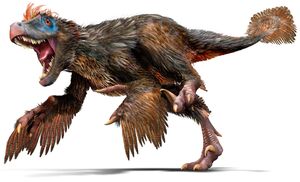 (Male)
(Male)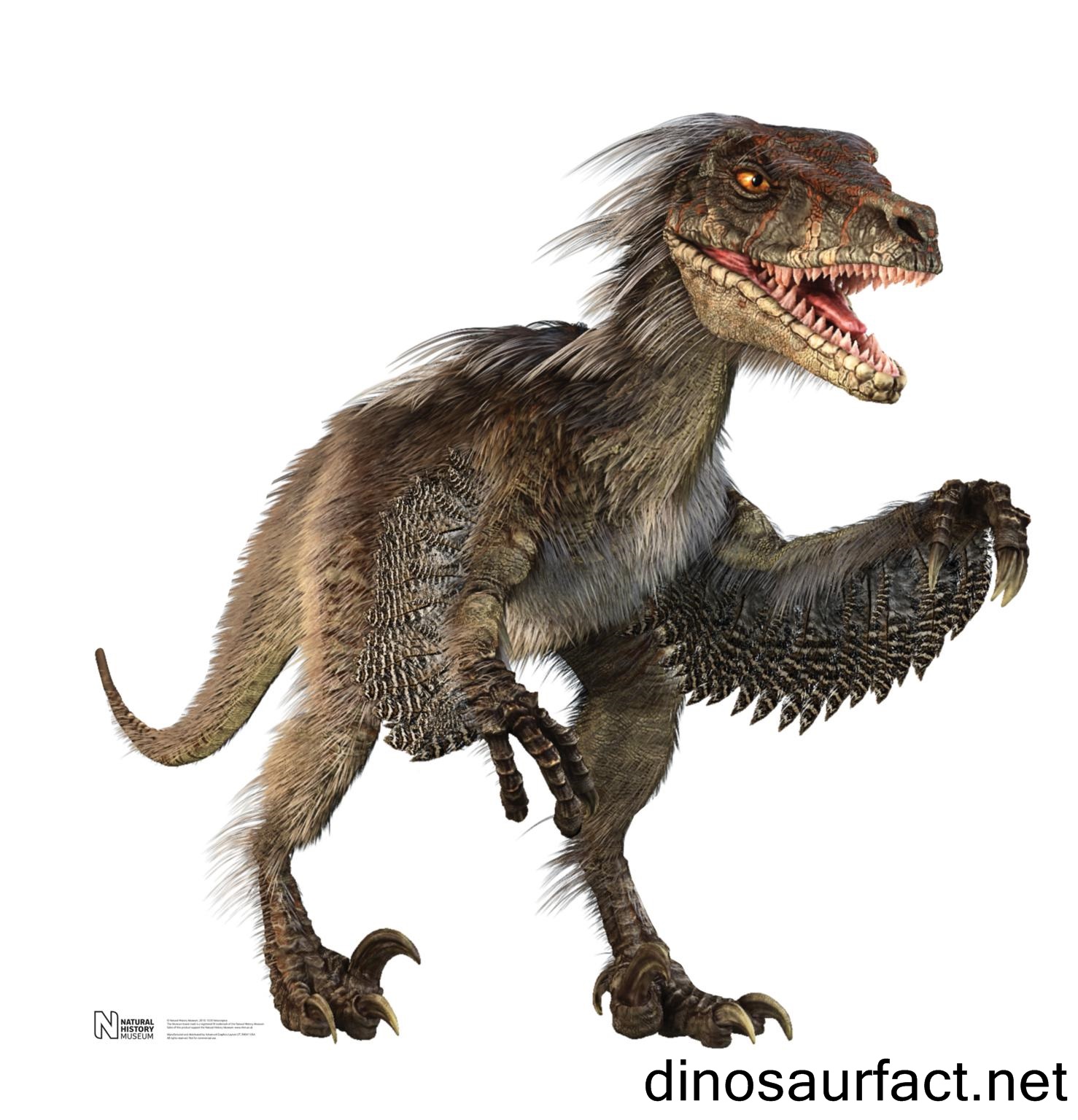 (Female)
(Female) (newly born Shimmering Squid)
(newly born Shimmering Squid)